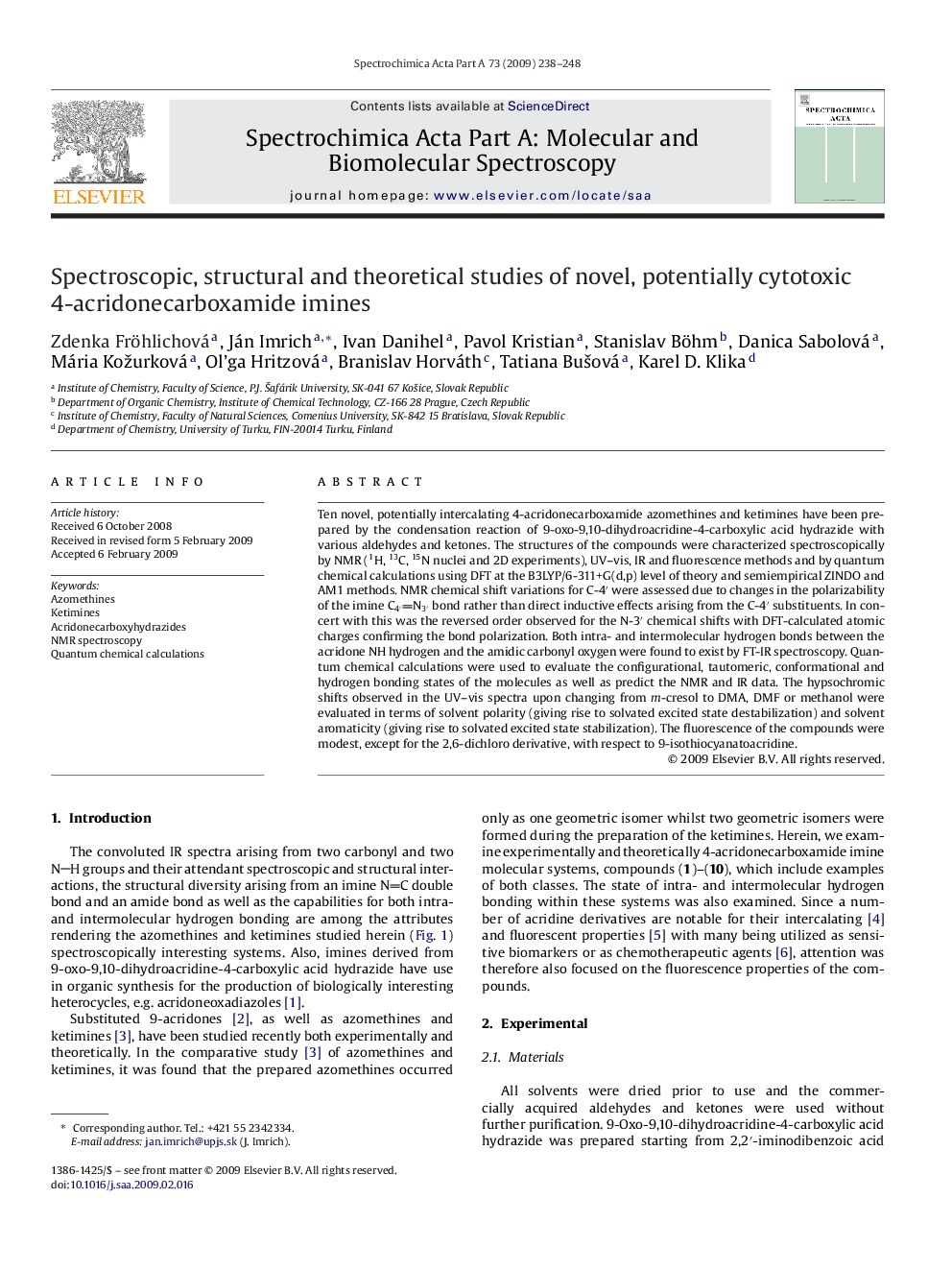| Article ID | Journal | Published Year | Pages | File Type |
|---|---|---|---|---|
| 1237641 | Spectrochimica Acta Part A: Molecular and Biomolecular Spectroscopy | 2009 | 11 Pages |
Ten novel, potentially intercalating 4-acridonecarboxamide azomethines and ketimines have been prepared by the condensation reaction of 9-oxo-9,10-dihydroacridine-4-carboxylic acid hydrazide with various aldehydes and ketones. The structures of the compounds were characterized spectroscopically by NMR (1H, 13C, 15N nuclei and 2D experiments), UV–vis, IR and fluorescence methods and by quantum chemical calculations using DFT at the B3LYP/6-311+G(d,p) level of theory and semiempirical ZINDO and AM1 methods. NMR chemical shift variations for C-4′ were assessed due to changes in the polarizability of the imine C4′N3′C4′N3′ bond rather than direct inductive effects arising from the C-4′ substituents. In concert with this was the reversed order observed for the N-3′ chemical shifts with DFT-calculated atomic charges confirming the bond polarization. Both intra- and intermolecular hydrogen bonds between the acridone NH hydrogen and the amidic carbonyl oxygen were found to exist by FT-IR spectroscopy. Quantum chemical calculations were used to evaluate the configurational, tautomeric, conformational and hydrogen bonding states of the molecules as well as predict the NMR and IR data. The hypsochromic shifts observed in the UV–vis spectra upon changing from m-cresol to DMA, DMF or methanol were evaluated in terms of solvent polarity (giving rise to solvated excited state destabilization) and solvent aromaticity (giving rise to solvated excited state stabilization). The fluorescence of the compounds were modest, except for the 2,6-dichloro derivative, with respect to 9-isothiocyanatoacridine.
